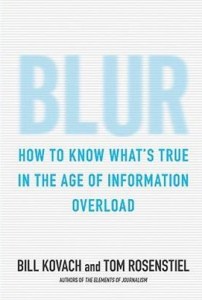A thirty-year era of repression, “stability” and fear ended last week after eighteen days of protests by ordinary Egyptians. Millions took to the streets in what has been called a leaderless rebellion. One of the most thrilling aspects of the revolution is that it was carried out by millions of ordinary people; as one person called them: “heroes with no names.” There was no strongman who organized a putsch and seized power.
Yet even a mass movement inevitably requires a voice, and one of the most eloquent voices is Wael Ghonim, whose interview on Dream TV helped to reenergize the protests when the regime was hoping that they would run out of steam. That riveting interview was Ghonim’s leadership moment, when his eloquence, deep conviction and courage came together to make a real difference.
If you can take the time, do yourself a favor and watch the entire interview.
Whenever I ask salespeople in my classes which type of questions are most effective, open-ended or closed, the overwhelming majority select open. The reasons given are that open questions are best at getting the customer talking and for finding out unexpected information. After all, if you’re in a solution sale, it’s critical to find out as much as possible about the customer’s business and current situation in order to uncover pain points. They do like closed questions, however, when they are trying to gain agreement towards the end of the call.
In this article and the next, I will point out why these beliefs are actually incorrect when applied to complex sales, and may actually hinder your sales effectiveness.
 One of the central themes of Practical Eloquence is that content is king. If you take your responsibilities as a persuader or a decision maker seriously, then Blur is an important book for you because sound decisions depend on sound knowledge. Paradoxically, there is so much information available today, from so many sources, that knowledge is harder to come by. As Blur tells us: ”When information is in greater supply, knowledge becomes harder to create, because we have to sift through more data to arrive at it. Confusion and uncertainty are more likely.”
One of the central themes of Practical Eloquence is that content is king. If you take your responsibilities as a persuader or a decision maker seriously, then Blur is an important book for you because sound decisions depend on sound knowledge. Paradoxically, there is so much information available today, from so many sources, that knowledge is harder to come by. As Blur tells us: ”When information is in greater supply, knowledge becomes harder to create, because we have to sift through more data to arrive at it. Confusion and uncertainty are more likely.”
Besides the sheer volume, another complication is the tension between fact and faith. So much of the information we rely on for informed decisions has to be taken on faith. In a simpler age, most of what had an immediate impact on our lives happened close by, so we could rely on observable fact in making decisions. When companies were smaller, we knew the people involved or we knew our customers personally, so we either had a chance to see things firsthand or had a reliable sense of the trustworthiness of our source. As the world has become larger, more complicated and more connected, more of what affects us happens further away, so we have to make more decisions based on what someone else tells us—in other words to take their information on faith.
Think of the last presentation you attended. How much of what the speaker said do you remember?
Chances are, it’s very little. One study found that, immediately after a 10 minute presentation, the audience had already forgotten 50% of what had just been said. That figure dropped to 25% by the next day and only 10% a week later.[1]
Looking at it another way, let’s consider the ubiquitous Pareto Principle, aka the 80/20 rule. In a normal distribution, roughly 80% of the result comes from 20% of the inputs. I believe it also applies to the details you include in your presentations. Regardless of how interesting your topic, how many stories and examples you include, and how much of your own passion you put in, the stark fact is that most of your audience will immediately forget most of what you said. If they are going to discuss and then decide immediately after you stop speaking, this might not be so bad, but that’s not always the case.
If they’re going to make a decision later, the key question to you as a speaker is: Which 10% do you want them to remember?





